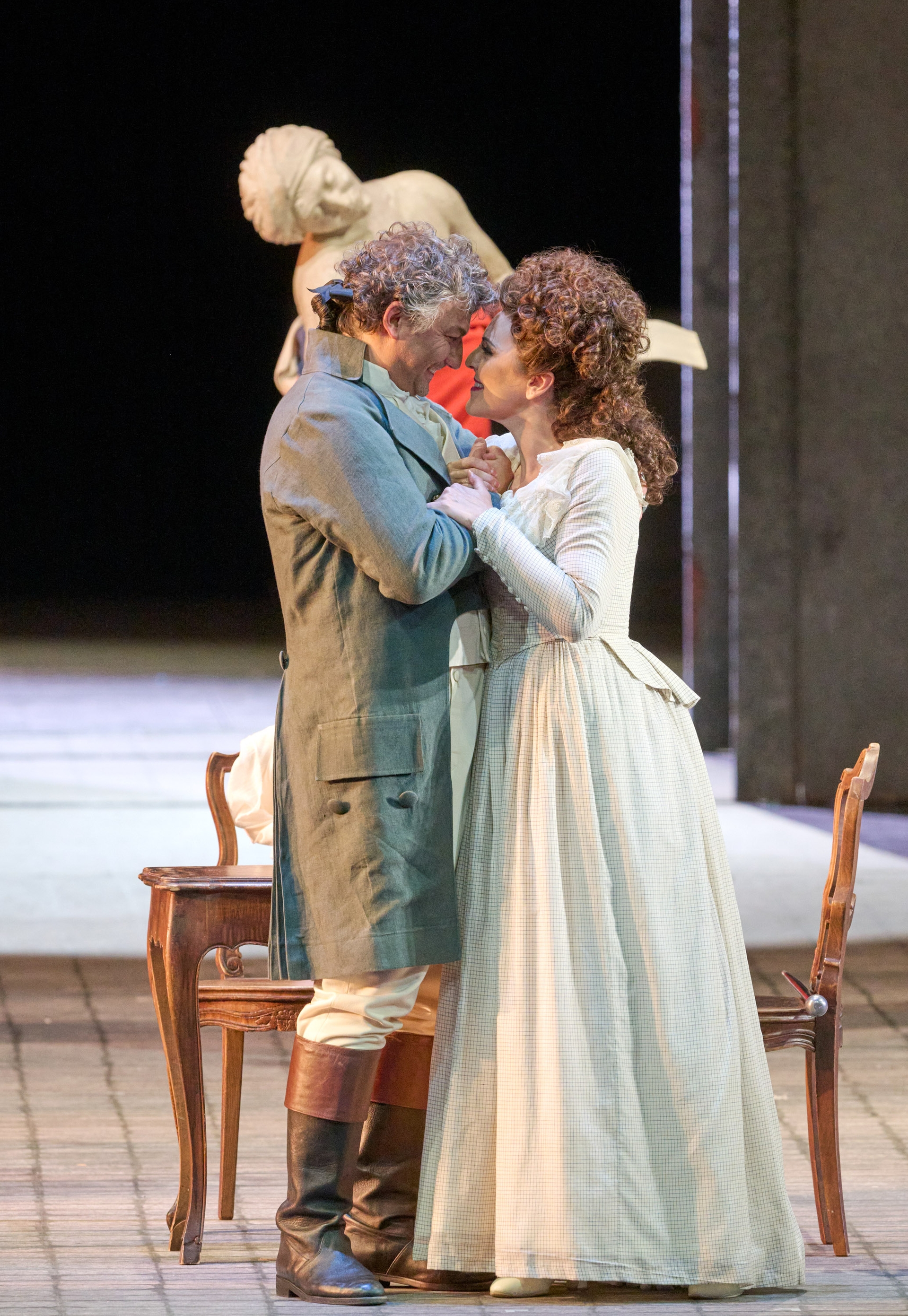United until death
Feature |
The name of the French poet André Marie de Chénier, who was born near Istanbul, would probably have long been forgotten outside France if the composer Umberto Giordano had not chosen him as the title hero of his fourth and most successful opera: For since its premiere at La Scala in Milan in 1896, Andrea Chénier has been one of the central works of Italian verismo worldwide. It tells the tragic story of the young poet Andrea Chénier, whose political incorruptibility and love for the noblewoman Maddalena cost him his head during the French Revolution.

Jonas Kaufman as Andrea Chénier and Maria Agresta as Maddalena
Naturally, André Chenier, or Andrea Chénier, as he is called in this Italian setting, was given somewhat more stageworthy character traits than the moderate revolutionary poet had actually possessed: the supporter of a constitutional monarchy, who had voted against the execution of Louis XVI during the French Revolution, but who also wrote odes in which he called for the murder of political dissidents, was transformed into a deeply romantic figure in the opera, despite his predominantly veristic basic character. in the opera, the supporter of a constitutional democracy, who had voted against the execution of Louis XVI during the French Revolution but also wrote odes in which he called for the murder of political dissidents, became a deeply romantic figure, despite his predominantly veristic character, whose rebelliousness consisted above all in his social sentiment towards the lower classes of society.
The stage character is alien to any kind of violence. Likewise the superficiality of the bon vivant. Whereas the original Chénier had casual, often changing relationships with aristocratic ladies, the opera presents the audience with a true lover, who ultimately courageously goes to meet the guillotine together with his equal Maddalena di Coigny. Of course, the opera also features a personal adversary in matters of love - the revolutionary Carlo Gérard. A fighter for justice who has become a villain and whose unrequited love for Maddalena has turned him into a diabolical schemer. But in the end he repents and tries desperately, without any chance, to stop the bloody course he has set in motion.
The librettist Luigi Illica (who is also known to have worked with Puccini on several occasions) and Umberto Giordano succeeded in creating a moving love romance in the best Italian style of the late 19th century with this refinement of Chénier's character against the backdrop of the tribunal and the scaffold. As the music of this opera exhibits all the characteristics of verismo - passion, tension, expressivity, lyrical emphasis, emotional cantilena, amusement - and is also bursting with a catchy wealth of melodies (just think of the effective arias), it is no wonder that the work was able to achieve the popularity with both audiences and performers from the very beginning that still characterizes it today.
However, the first performance (in German) at the Vienna State Opera took place surprisingly late - not until 1926 - but from this point onwards, it was impossible to imagine the opera house's repertoire without it. And so it is only natural that the Andrea Chénier performancesat Haus am Ring are also associated with the names of the best singers of the respective generation, for which there is hardly enough space to list. The current series in April follows on seamlessly from this: Otto Schenk's production features Michael Fabiano as Andrea Chénier (most recently Calaf in Turandot), Sonya Yoncheva as Maddalena (most recently celebrated as Tosca and in the current new production of Iolanta as the title heroine) and the great Italian baritone Luca Salsi as Gérard.
